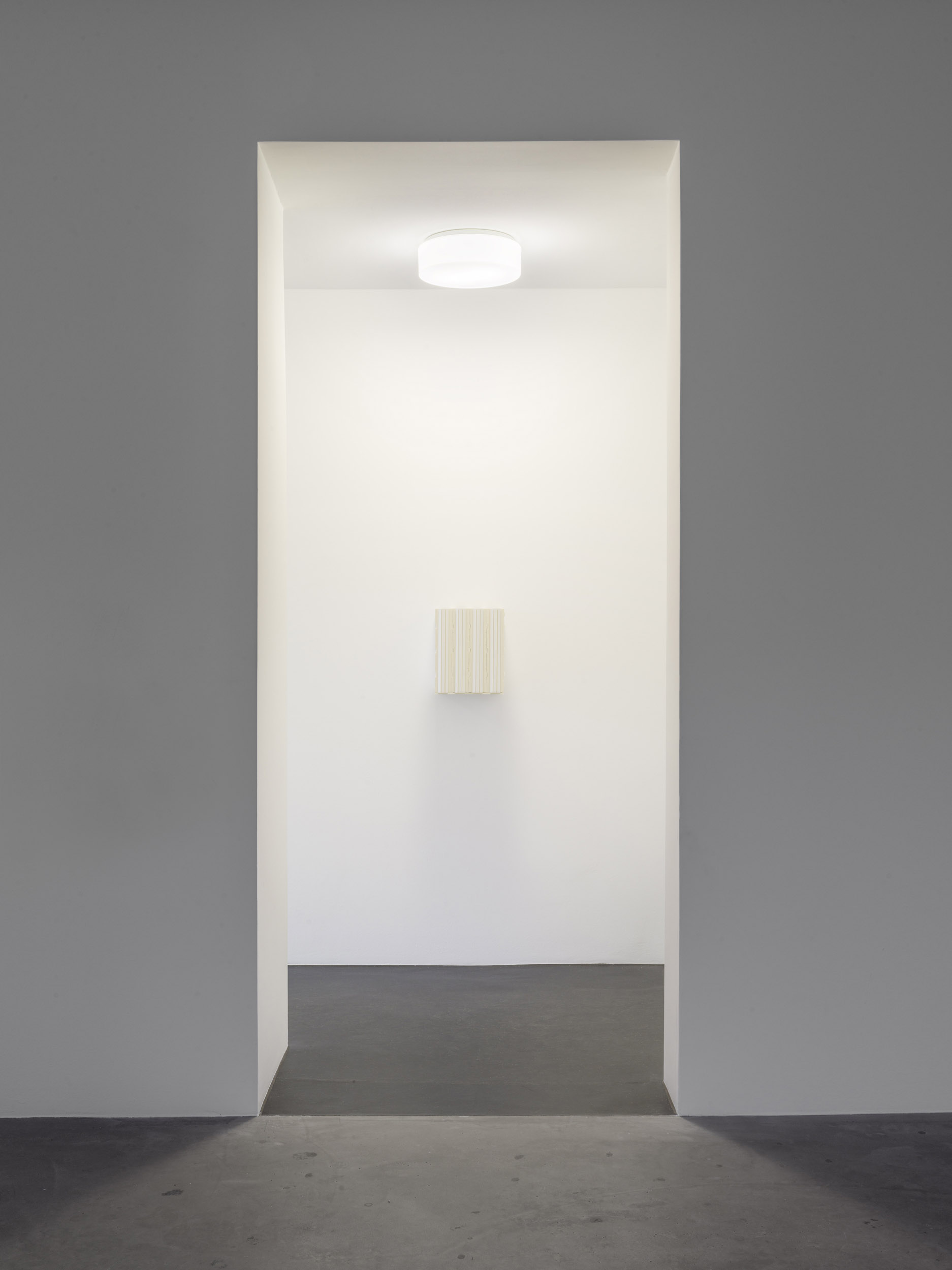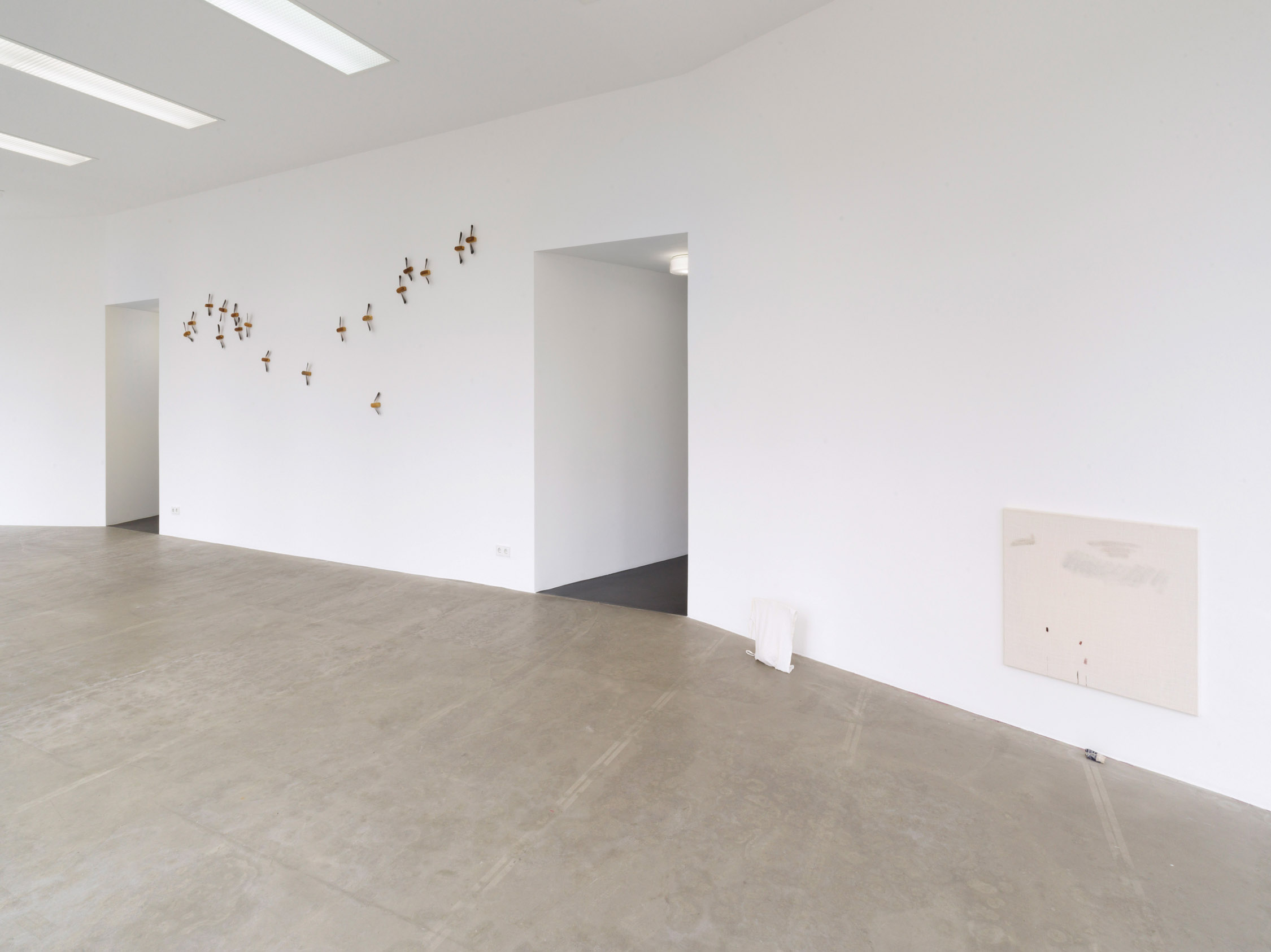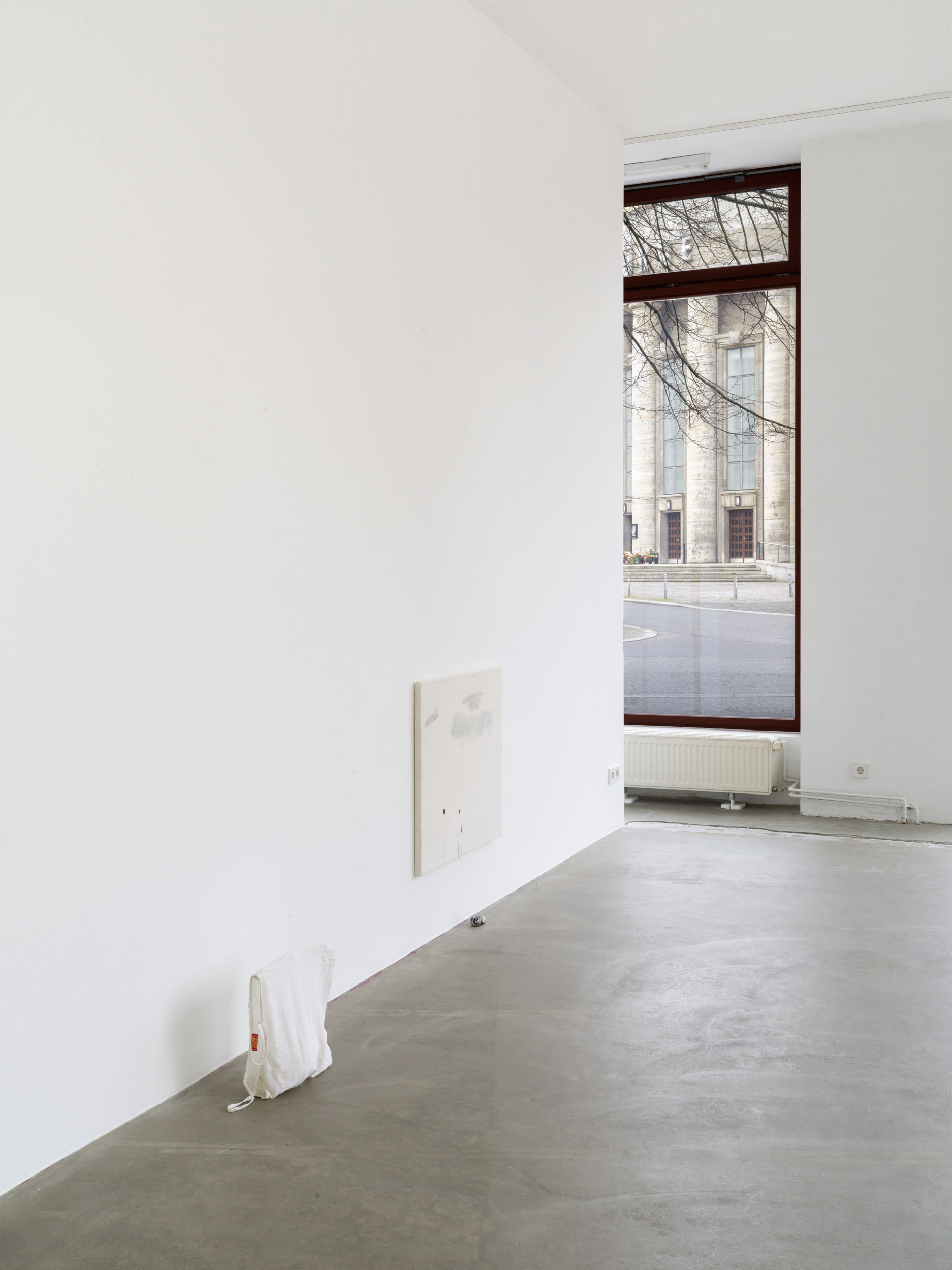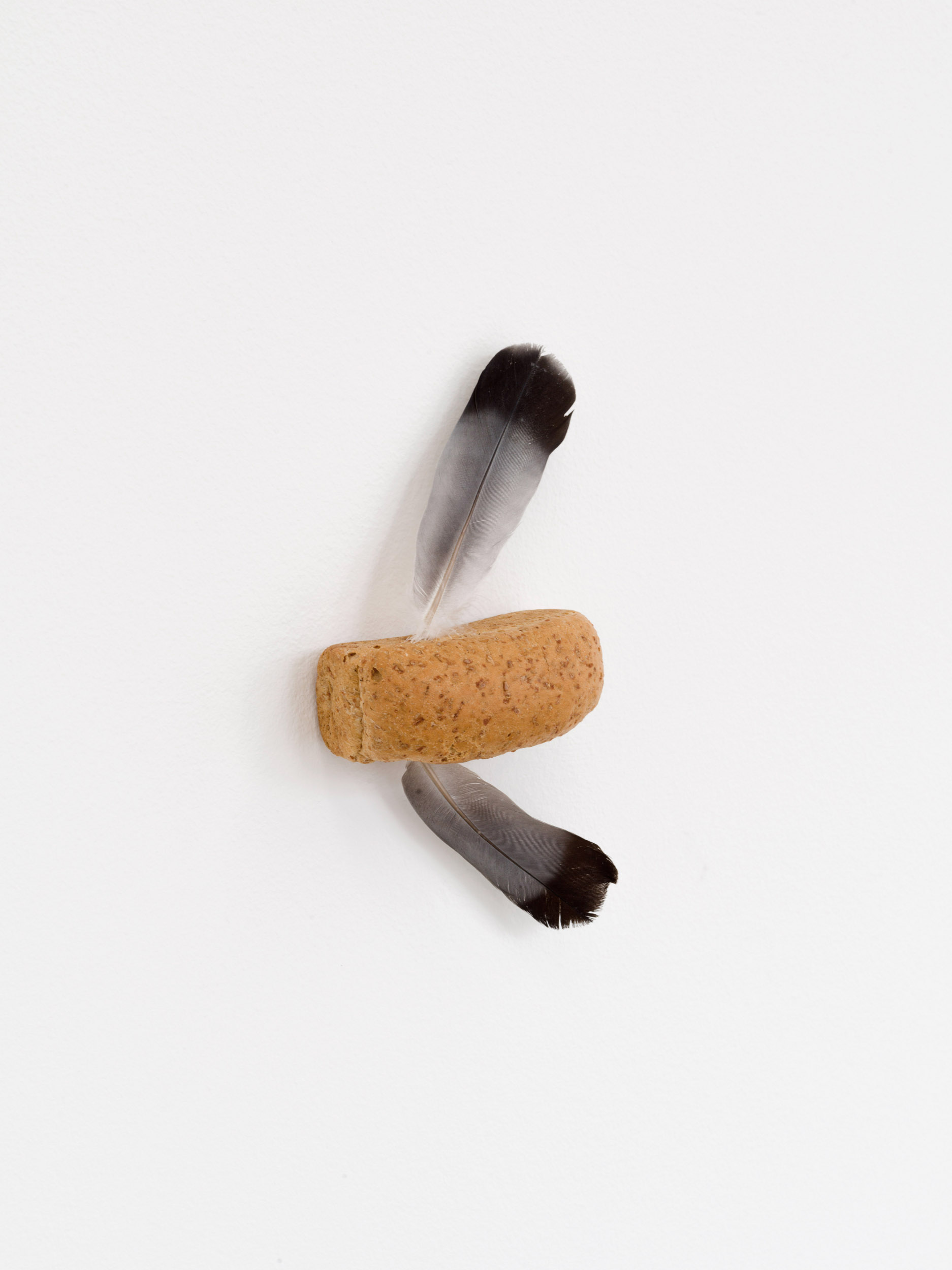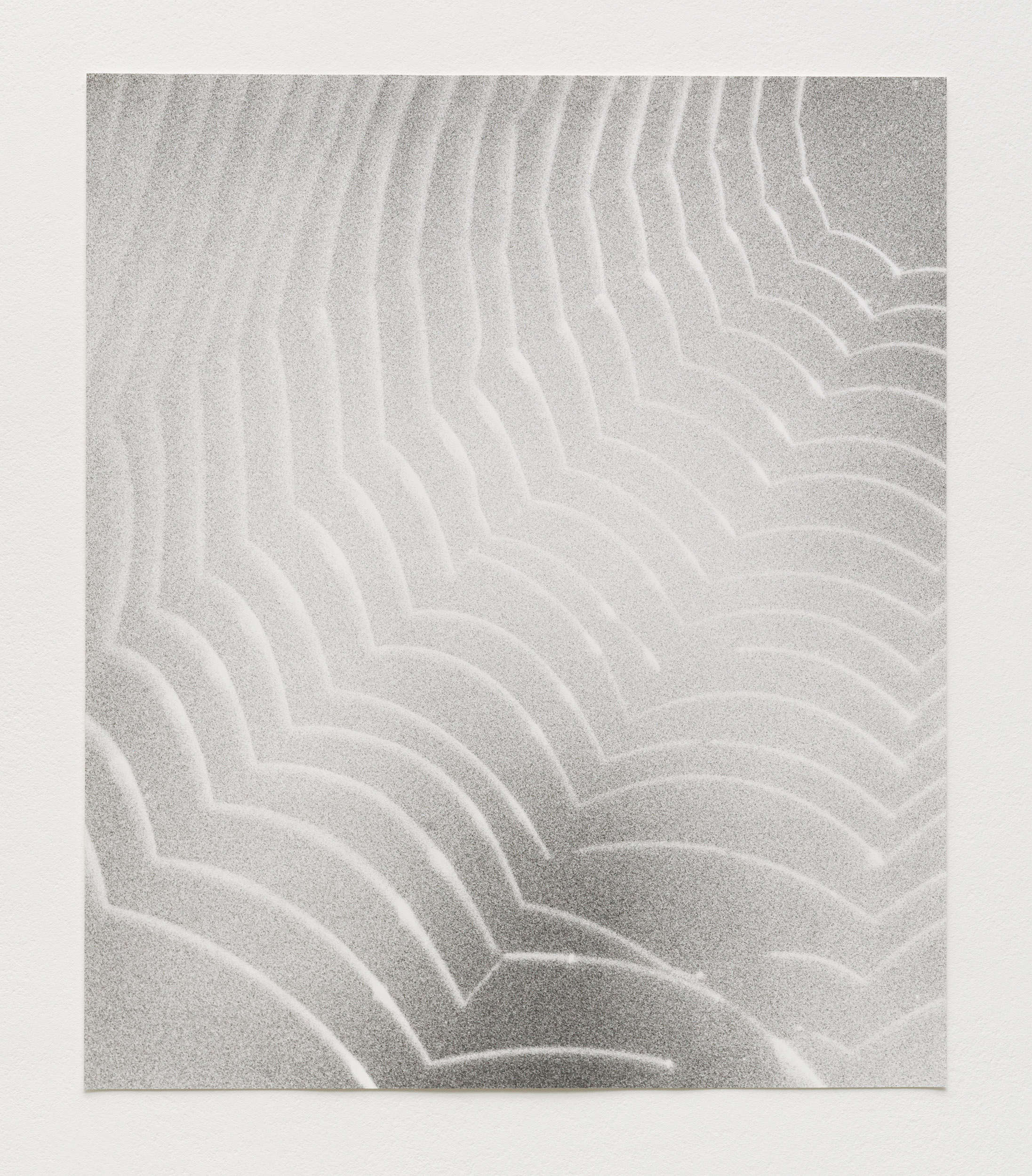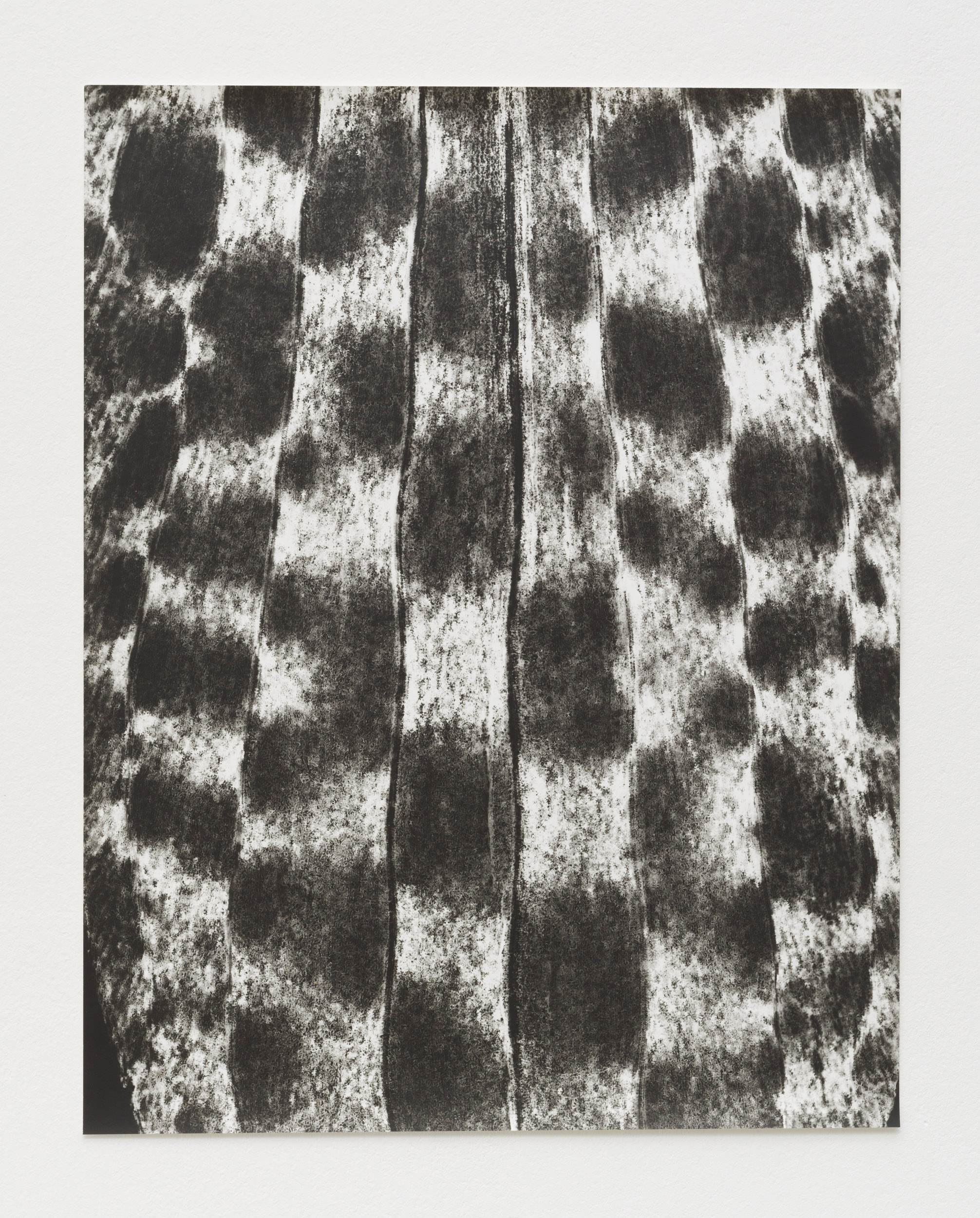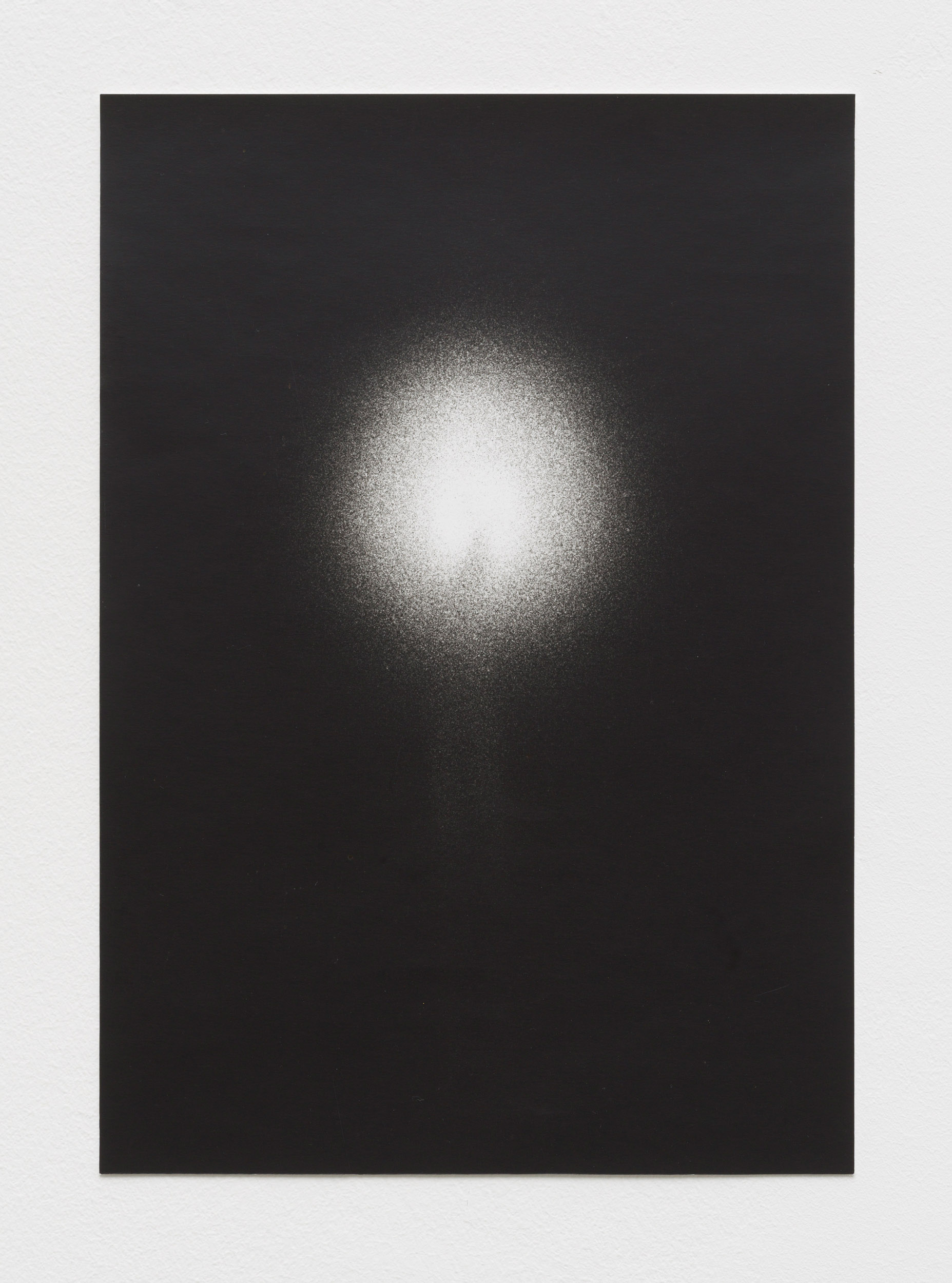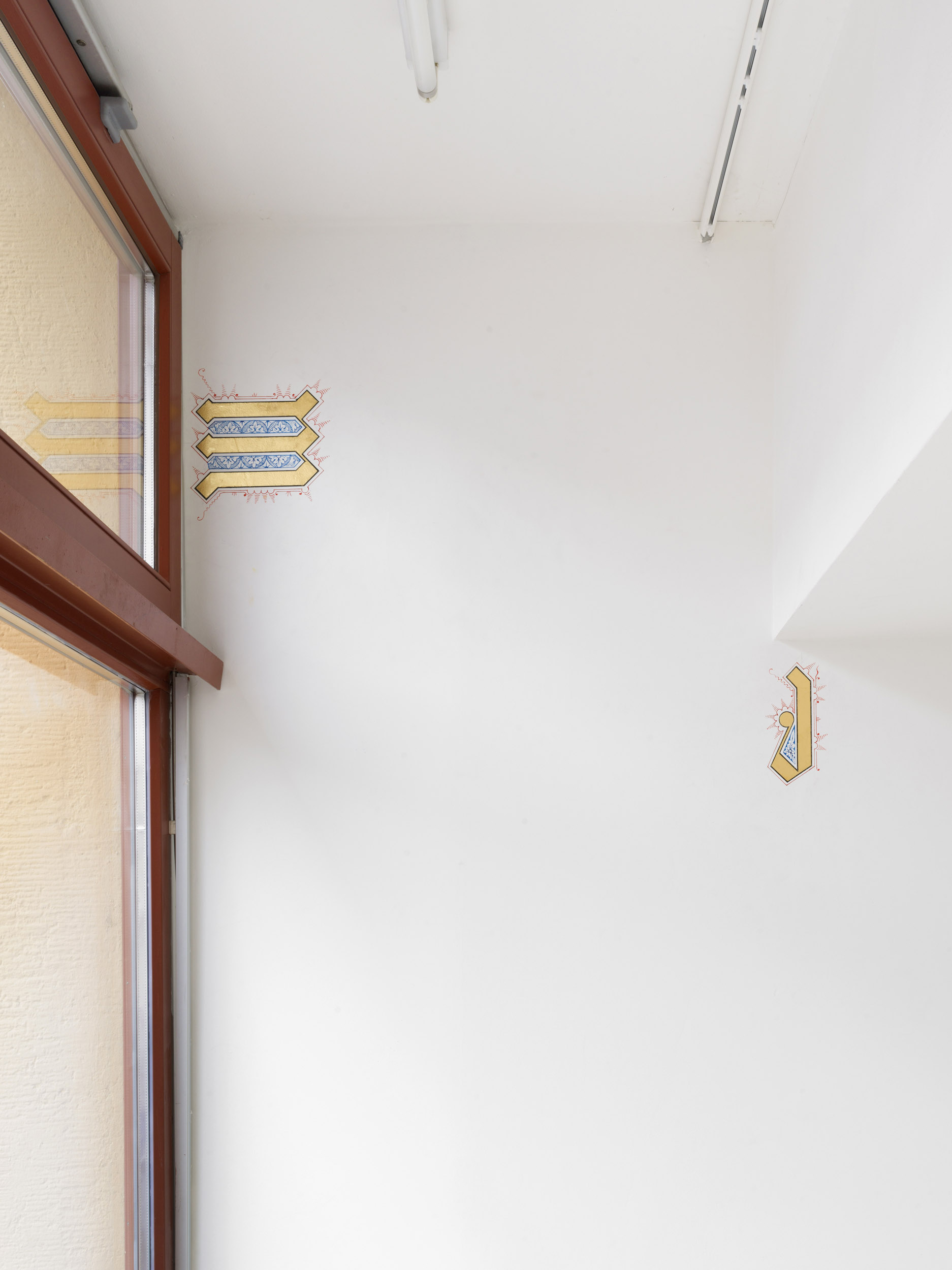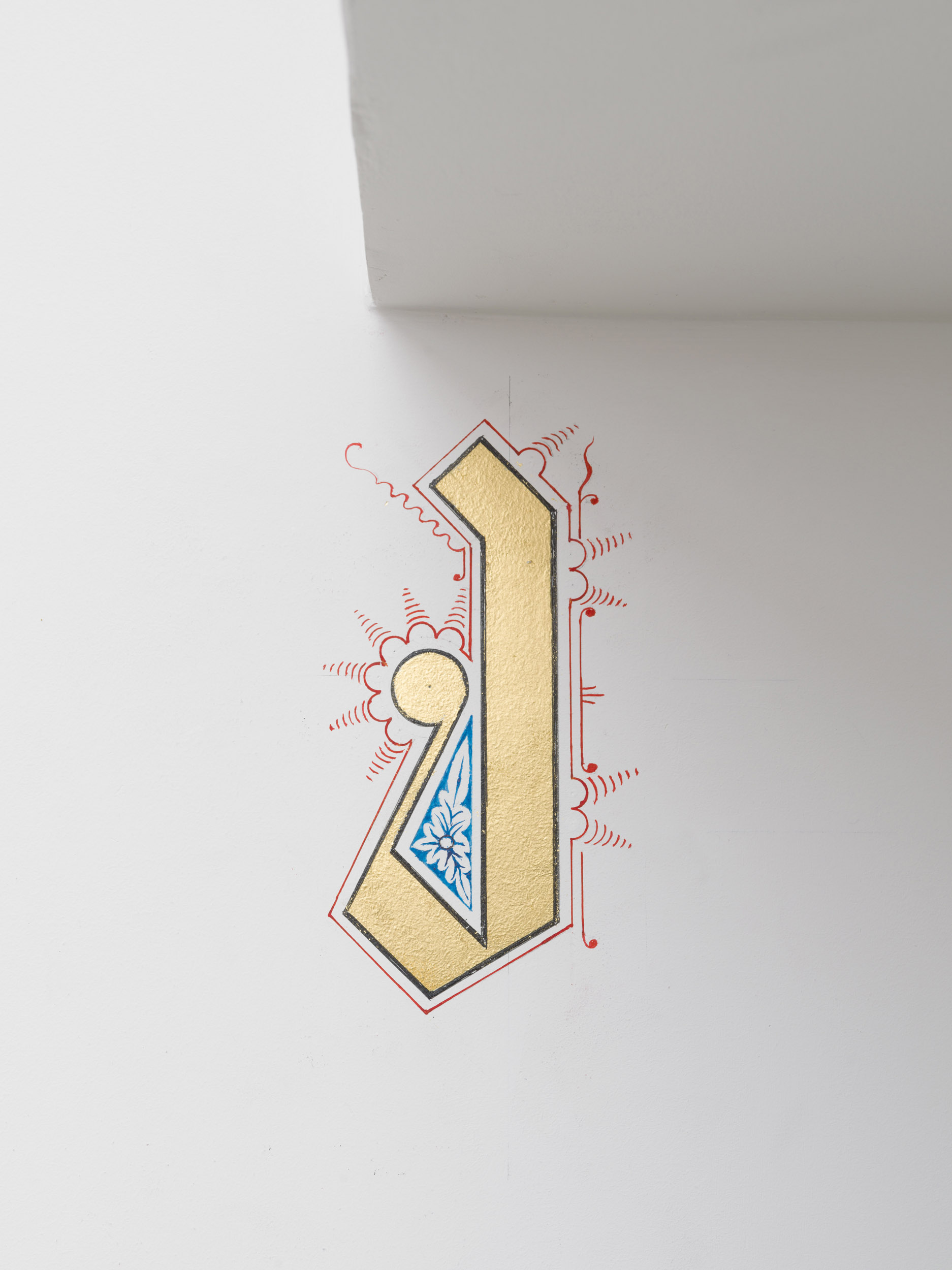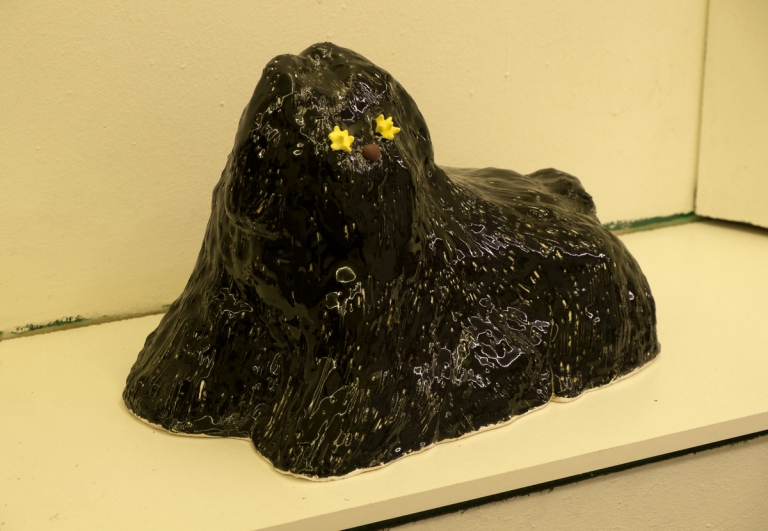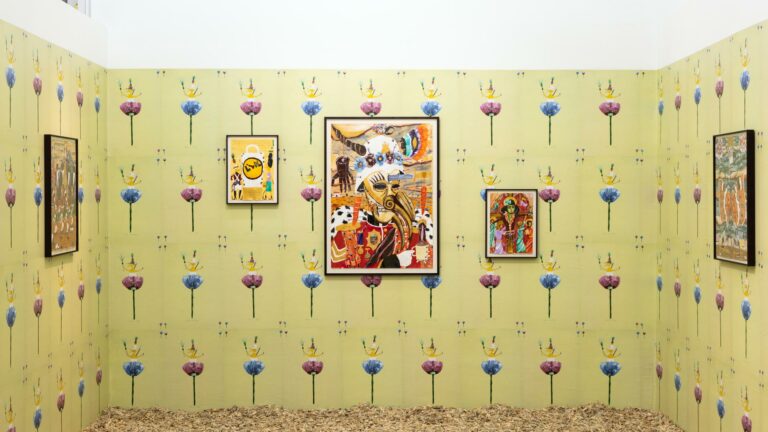Artists: Lothar Baumgarten, Jochen Lempert, Cathy Wilkes, Mara Wohnhaas, Richard Wright
Exhibition title: Planet Venus in Full Daylight
Venue: BQ Berlin, Berlin, Germany
Date: March 5 – April 13, 2024
Photography: Roman März / all images copyright and courtesy of the artists and BQ, Berlin
At the centre of the exhibition Planet Venus in Full Daylight are two early works by the German conceptual artist Lothar Baumgarten, in dialogue with works by four BQ gallery artists: Jochen Lempert, Cathy Wilkes, Mara Wohnhaas and Richard Wright. The key ideas that can be traced in the exhibition are, firstly, a close observation of lived reality and, secondly, an interest in probing the limits of representation. The exhibition title is derived from French anthropologist and ethnologist Claude Lévi-Strauss’s Myth and Meaning (1978), in which he discusses how the sensory perceptions of ancient peoples held validity and insights that modern Western civilization has lost. Lévi-Strauss found that those more attuned and perceptive to the natural world, such as tribespeople or sailors of old, were perfectly able to see the planet Venus in full daylight—as could present-day people “if [they] had a trained eye.”i
Lothar Baumgarten (b. 1948, Rheinsberg; d. 2018, Berlin) was the son of an ethnographer who introduced him to comparative cultural studies. His burgeoning artistic practice was shaped by ethnographic and anthropological methods, particularly the structuralist analyses of Lévi-Strauss and his recognition of the limitations of Western thought patterns. In the late 1960s, Baumgarten studied under Joseph Beuys at the Kunstakademie Düsseldorf, where he further explored “the many levels that cannot be limited to rational analysis”ii and developed his distinctive visual language expressed through photographs, drawings, sculptures, installations, slide projections, films, and texts. These early works anticipated his subsequent South American field work, when for a period of eighteen months during the years 1978–1980 he lived among the Yãnomãmi people in the Amazon.
Moskitos (1969) is a flock of 18 winged creatures, fashioned from miniature loaves of bread and common pigeon feathers. Pigeons were first domesticated 10,000 years ago, due to their value as food and as messengers, although today they are usually viewed as pests. Bread has an even longer history, with the first evidence of bread making (using wild wheat) found amongst Natufian hunter-gatherers who lived 14,400 years ago in Jordan.iii Baumgarten’s title Moskitos points to the small flies that have evolved since the Early Cretaceous Period to become both micropredators and vectors of deadly diseases such as malaria, dengue and yellow fever.iv Here, Baumgarten tasks the viewer with a puzzle concerning food, domesticity, parasitical relationships and the expertise of ancient peoples with “fantastically precise knowledge of their environment and all their resources.”v
The second Baumgarten work included in the exhibition is the slide projection Eine Reise oder ‘Mit der MS Remscheid auf dem Amazonas’/ Der Bericht einer Reise unter den Sternen des Kühlschranks (1968–1971), which combines images of Baumgarten’s early ephemeral sculptures, interspersed with photography and text relating to German ethnologist and explorer Theodor Koch-Grünberg and Italian photographer and ethnologist Guido Boggiani, both of whom studied indigenous people in South America at the turn of the 19th century. Koch-Grünberg attempted to protect himself from malaria by taking quininevi but he succumbed to the disease on a 1924 expedition to Brazil, aged 52. Boggiani also met an early death in 1901 aged just 41, when he was ritually killed in Paraguay by the Tumrahá, who (it was alleged) associated his photography with witchcraft.vii
Jochen Lempert (b. 1958, Moers) is a biologist by training whose handprinted 35mm black-and-white photographs give disorientating views of the interrelations of the human and natural world. By encouraging a more attentive way of discerning correlations between humans, plants and animals, Lempert’s haunting perspectives “reach more wisdom than we think we are capable of.”viii
Cathy Wilkes (b. 1966, Belfast) makes sculptural installations incorporating paintings, works on paper and everyday objects that draw to the surface the qualitative aspect of reality. Recently she has made a series of silk and linen panels primed with gum arabic and painted with pigments, created through a process which “feels like continuous preparation, and then eventually recognition when I see it.”
Like Lothar Baumgarten before her, Mara Wohnhaas (b. 1997, Karlsruhe) is a student at Kunstakademie Düsseldorf. Her developing practice revolves around sculptural constructions and installations. Her work in this exhibition is a wall object reminiscent of a book or a building (both containers for knowledge) and inspired both by architecture and the processes of bookbinding.
Richard Wright (b. 1960, London) makes wall drawings of varying scale and complexity in direct and sensitive response to the spaces in which they are produced.ix For this exhibition, Wright has recreated a work from 2000: the word METHOD in illuminated script. He explains, “The work is like a worn step, it is like a smoke detector, it is even like a picture, but it is even more like the spaces between the letters of words.”x
The study of cognitive processes, that began with Aristotle and descended via Aquinas to Descartes, saw emotional expressions as vestiges of patterns of actions we have long evolved beyond.xi It was ethnologists such as Lévi-Strauss that emphasised that humans are not purely rational. But through careful acts of looking, it is still possible to witness what Walter Benjamin described as the natural sensuous correspondences that predated language.xii
-Text Sarah Lowndes
i Claude Lévi-Strauss, Myth and Meaning (New York: Schocken Books, 1978), 18.
ii Lucrezia De Dominizio Durini, The Felt Hat: Joseph Beuys A Life Told (Milan: Charta, 1997), 34.
iii Amaia Arranz-Otaegui et al. , “Archaeobotanical evidence reveals the origins of bread 14,400 years ago in northeastern Jordan,” Anthropology 115:31 (July 16, 2018): 7925–7930.
iv Dany Azur et al., “The earliest fossil mosquito,” Current Biology 33:23 (December 4, 2023):, 5240–5246.
v Lévi-Strauss, Myth and Meaning, 19.
vi Theodor Koch-Grünberg, Vom Roraima zum Orinoco. Ergebnisse einer Reise in Nordbrasilien und Venezuela in den Jahren 1911–1913 (Stuttgart: Strecker und Schröder, 1916), 88.
vii Heather F. Roller, “On the Verge of Total Extinction? From Guaikurú to Kadiwéu in Nineteenth Century Brazil,” Ethnohistory 65:4 (2018): 647–670.
viii Lévi-Strauss, Myth and Meaning, 24.
ix Martin Clark, “Process and Reality,” in Richard Wright (New York: Gagosian, 2023), 227.
x Adam Szymzcyk, “In Conversation with Richard Wright,” in Richard Wright (Düsseldorf: Kunstverein für die Rheinlande und Westfalen, 2002), 57.
xi Peter G. Coleman and Ann O’Hanlon, Aging and Development: Social and Emotional Perspectives (London and New York: Routledge, 2016), chapter 6.
xii Walter Benjamin, “The Mimetic Faculty,”in Reflections (New York: Schocken Books, 1933), 336.


